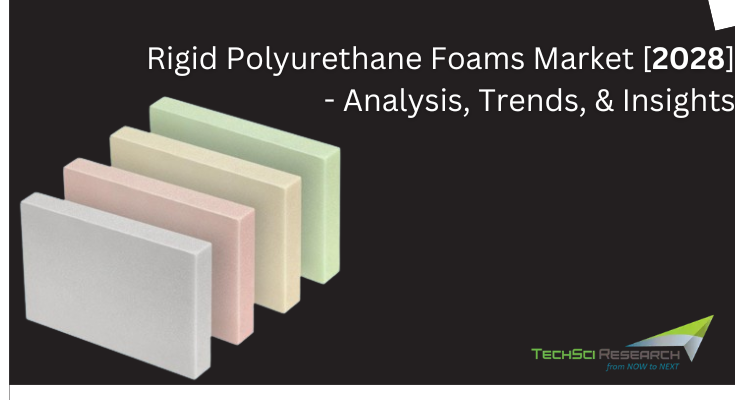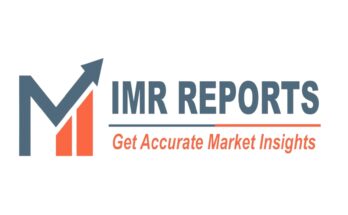According to TechSci Research report, “Rigid Polyurethane Foams Market – Global Industry Size, Share, Trends, Competition Forecast & Opportunities, 2028”, Global Rigid Polyurethane Foams Market has valued at USD 2.97 billion in 2022 and is anticipated to project robust growth in the forecast period with a CAGR of 3.08% through 2028.
The technological landscape of the Rigid Polyurethane Foams Market is experiencing a dynamic evolution, marked by significant advancements that are reshaping the insulation and construction material industry. Rigid polyurethane foams, renowned for their exceptional thermal insulation properties, are undergoing innovations that enhance their performance, sustainability, and applicability across diverse sectors.
One key technological advancement in the Rigid Polyurethane Foams Market is the development of environmentally friendly blowing agents. Traditionally, rigid polyurethane foams were produced using blowing agents with high global warming potential (GWP), contributing to environmental concerns. However, ongoing research has led to the formulation of foams with low GWP blowing agents, such as hydrofluoroolefins (HFOs) and hydrocarbons. This transition aligns with global efforts to reduce greenhouse gas emissions and mitigate the environmental impact of insulation materials, making rigid polyurethane foams more sustainable.
Advancements in formulation technologies have also resulted in rigid polyurethane foams with improved fire performance. Fire-resistant formulations incorporating flame retardants and char-forming additives enhance the foams’ resistance to combustion, meeting stringent safety regulations and standards. This technological development is particularly significant in applications where fire safety is paramount, such as in the construction of commercial buildings, transportation, and aerospace industries.
Furthermore, the integration of nanotechnology has introduced enhanced structural properties to rigid polyurethane foams. The incorporation of nanofillers, such as nanoparticles or nanofibers, strengthens the foam matrix, improving mechanical strength, thermal stability, and dimensional stability. These nanocomposites enable the production of high-performance foams suitable for structural applications, contributing to the lightweighting of materials without compromising on strength.
Technological innovations in raw materials are playing a pivotal role in advancing the Rigid Polyurethane Foams Market. Bio-based polyols derived from renewable resources, such as soybean oil or castor oil, are being increasingly used to replace a portion of the traditional petrochemical-based polyols. This shift towards bio-based raw materials aligns with sustainability goals, reduces dependency on fossil fuels, and decreases the environmental footprint of rigid polyurethane foams.
Moreover, advancements in manufacturing processes, particularly continuous and discontinuous panel production methods, have streamlined the fabrication of rigid polyurethane foam panels. Continuous panel production involves the continuous formation of foam panels in a continuous line, enabling efficient mass production. Discontinuous panel production, on the other hand, allows for more flexibility in panel dimensions and shapes. These advancements enhance the efficiency, cost-effectiveness, and customization potential of rigid polyurethane foam panels, catering to diverse construction and insulation requirements.
The rise of composite materials in the Rigid Polyurethane Foams Market is another notable technological trend. Composite foams, combining rigid polyurethane with other materials like glass fibers or mineral additives, offer enhanced mechanical and thermal properties. These composite foams find applications in high-performance insulation solutions for industrial equipment, refrigeration systems, and building envelopes.
In response to the demand for energy-efficient building solutions, the development of vacuum insulation panels (VIPs) incorporating rigid polyurethane foams has gained prominence. VIPs, known for their extremely low thermal conductivity, utilize rigid polyurethane foams as core materials. This technological advancement allows for the creation of ultra-thin yet highly effective insulation panels, contributing to the energy efficiency of buildings and appliances.
Furthermore, the exploration of phase-change materials (PCMs) within rigid polyurethane foams is opening new possibilities for temperature-regulating applications. Incorporating PCMs into foams allows for the storage and release of thermal energy, contributing to temperature control in buildings and transportation. This technology addresses the need for sustainable and energy-efficient solutions, particularly in regions with varying climatic conditions.
In conclusion, technological advancements are driving innovation and sustainability in the Rigid Polyurethane Foams Market. From environmentally friendly blowing agents and fire-resistant formulations to nanotechnology, bio-based raw materials, and advanced manufacturing processes, these developments are shaping the future of insulation materials. As the construction industry and other sectors increasingly prioritize energy efficiency, safety, and environmental responsibility, rigid polyurethane foams are positioned to play a central role in meeting these evolving demands.
Browse over XX market data Figures spread through XX Pages and an in-depth TOC on “Global Rigid Polyurethane Foams Market” @ https://www.techsciresearch.com/report/rigid-polyurethane-foams-market/20071.html
The Global Rigid Polyurethane Foams Market is segmented into product type, application, regional distribution, and company.
The molded segment has emerged as the dominant player in the global market for rigid polyurethane foams in 2022, owing to its versatile applications and superior properties that cater to a wide range of industries. Molded rigid polyurethane foams are extensively used in applications such as insulation panels, automotive components, construction materials, and appliances.
One key factor contributing to the dominance of the molded segment is the ability of rigid polyurethane foams to take complex shapes and forms during the molding process. This makes them highly suitable for applications where precise and intricate designs are required, such as in the automotive and construction sectors. Moreover, molded rigid polyurethane foams offer exceptional thermal insulation properties, making them a preferred choice in construction and refrigeration applications. Their lightweight nature, combined with high strength and durability, further enhances their appeal in diverse industries.
The demand for energy-efficient and sustainable materials has also fueled the adoption of molded rigid polyurethane foams, especially in the construction sector where stringent building codes emphasize insulation performance.
As industries prioritize cost-effective and high-performance materials, the molded segment of rigid polyurethane foams has demonstrated unparalleled versatility and efficiency, consolidating its dominance in the global market in 2022. This trend is expected to persist as the demand for innovative and sustainable solutions continues to shape various industries
Based on the region , Asia Pacific region emerged as the dominant player in the global Rigid Polyurethane Foams market in 2022, holding the largest market share in terms of both value and volume. The Asia Pacific region has emerged as the dominant player in the global rigid polyurethane foams market, propelled by a confluence of factors that position the region at the forefront of this industry. One key contributor is the robust growth in construction and infrastructure development across countries like China and India. Rigid polyurethane foams are extensively used in these sectors for insulation, roofing, and structural applications, driving substantial demand.
Moreover, the manufacturing process of the Asia Pacific region plays a pivotal role. The presence of a well-established industrial base, coupled with cost-effective production capabilities, positions the region as a major producer and consumer of rigid polyurethane foams.
Rising awareness and implementation of energy-efficient building practices in the Asia Pacific further boosts the demand for rigid polyurethane foams, which offer superior thermal insulation properties.
Government initiatives promoting sustainable construction and the adoption of green building materials have also contributed to the dominance of the Asia Pacific region. Regulatory support and incentives for energy-efficient solutions align with the properties of rigid polyurethane foams, reinforcing their market dominance.
As industries continue to prioritize environmentally friendly and high-performance materials, the Asia Pacific region is poised to maintain its leadership in the global rigid polyurethane foams market, driven by sustained economic growth, increasing construction activities, and a focus on energy efficiency.
Major companies operating in the Global Rigid Polyurethane Foams Market are:
- Evonik Industries
- BASF SE
- SABIC
- 3M Company
- Asahi Kasei Chemicals Corporation
- Solvay SA
- Sumitomo Chemical Co., Ltd
- LyondellBasell Industries Holdings BV
- Mitsubishi Chemical Corporation
- Covestro AG
To Download FREE Sample Pages of this Report📥 @ https://www.techsciresearch.com/sample-report.aspx?cid=20071
Customers can also request for 10% free customization on this report
“The Rigid Polyurethane Foams Market is experiencing a transformative phase marked by technological advancements that enhance performance, sustainability, and versatility in insulation applications. Innovations include environmentally friendly blowing agents, fire-resistant formulations, and the integration of nanotechnology, reinforcing the foams’ structural properties. The adoption of bio-based raw materials aligns with sustainability goals, reducing reliance on petrochemicals. Manufacturing processes, such as continuous and discontinuous panel production, have become more efficient and customizable, catering to diverse construction needs. Composite materials, vacuum insulation panels, and the incorporation of phase-change materials further expand the applications of rigid polyurethane foams, particularly in energy-efficient building solutions. This market summary underscores how technological progress is reshaping rigid polyurethane foams into advanced, environmentally conscious materials crucial for meeting the evolving demands of insulation and construction industries.,” said Mr. Karan Chechi, Research Director with TechSci Research, a research-based management consulting firm.
“Rigid Polyurethane Foams Market – Global Industry Size, Share, Trends, Opportunity, & Forecast 2018-2028 By Type (Sheets, Blocks, Molded), By Raw Material (Diisocyanates, Polyols), By Application (Medical Imaging Equipment, Nuclear Containers, Refrigerator and Freezer Thermal Insulation Systems, Tooling and Molds, Prototypes, and Models, Cold Room, Dance Floors and Sports Flooring, Others), By End User (Electrical and Electronics, Construction, Consumer Goods, Healthcare, Automotive, Sports, Furniture and Bedding, Others), By Region, Competition”, has evaluated the future growth potential of Global Rigid Polyurethane Foams Market and provides statistics & information on market size, structure and future market growth. The report intends to provide cutting-edge market intelligence and help decision makers take sound investment decisions. Besides, the report also identifies and analyzes the emerging trends along with essential drivers, challenges, and opportunities in Global Rigid Polyurethane Foams Market.
You may also read:
North America Breathable Antimicrobial Coatings Market – Future, Scope, Trends [Latest]
[2028] Naphtha Market Update, Overview, Data, Forecast
North America Exterior Architectural Coatings Market Value, Trends [2028], Economy, Expansion, Leader
Table of Content-Rigid Polyurethane Foams Market
- Product Overview
1.1. Market Definition
1.2. Scope of the Market
1.2.1. Markets Covered
1.2.2. Years Considered for Study
1.2.3. Key Market Segmentations
- Research Methodology
2.1. Objective of the Study
2.2. Baseline Methodology
2.3. Key Industry Partners
2.4. Major Association and Secondary Applications
2.5. Forecasting Methodology
2.6. Data Triangulation & Validation
2.7. Assumptions and Limitations
- Executive Summary
3.1. Overview of the Market
3.2. Overview of Key Market Segmentations
3.3. Overview of Key Market Players
3.4. Overview of Key Regions/Countries
3.5. Overview of Market Drivers, Challenges, Trends
- Impact of COVID-19 on Global Rigid Polyurethane Foams Market
- Voice of Customer
- Global Rigid Polyurethane Foams Market Outlook
6.1. Market Size & Forecast
6.1.1. By Value & Volume
6.2. Market Share & Forecast
6.2.1. By Type (Sheets, Blocks, Molded),
6.2.2. By Raw Material (Diisocyanates, Polyols),
6.2.3. By Application (Medical Imaging Equipment, Nuclear Containers, Refrigerator and Freezer Thermal Insulation Systems, Tooling and Molds, Prototypes, and Models, Cold Room, Dance Floors and Sports Flooring, Others),
6.2.4. By End User (Electrical and Electronics, Construction, Consumer Goods, Healthcare, Automotive, Sports, Furniture and Bedding, Others)
6.2.5. By Region
6.2.6. By Company (2022)
6.3. Market Map



